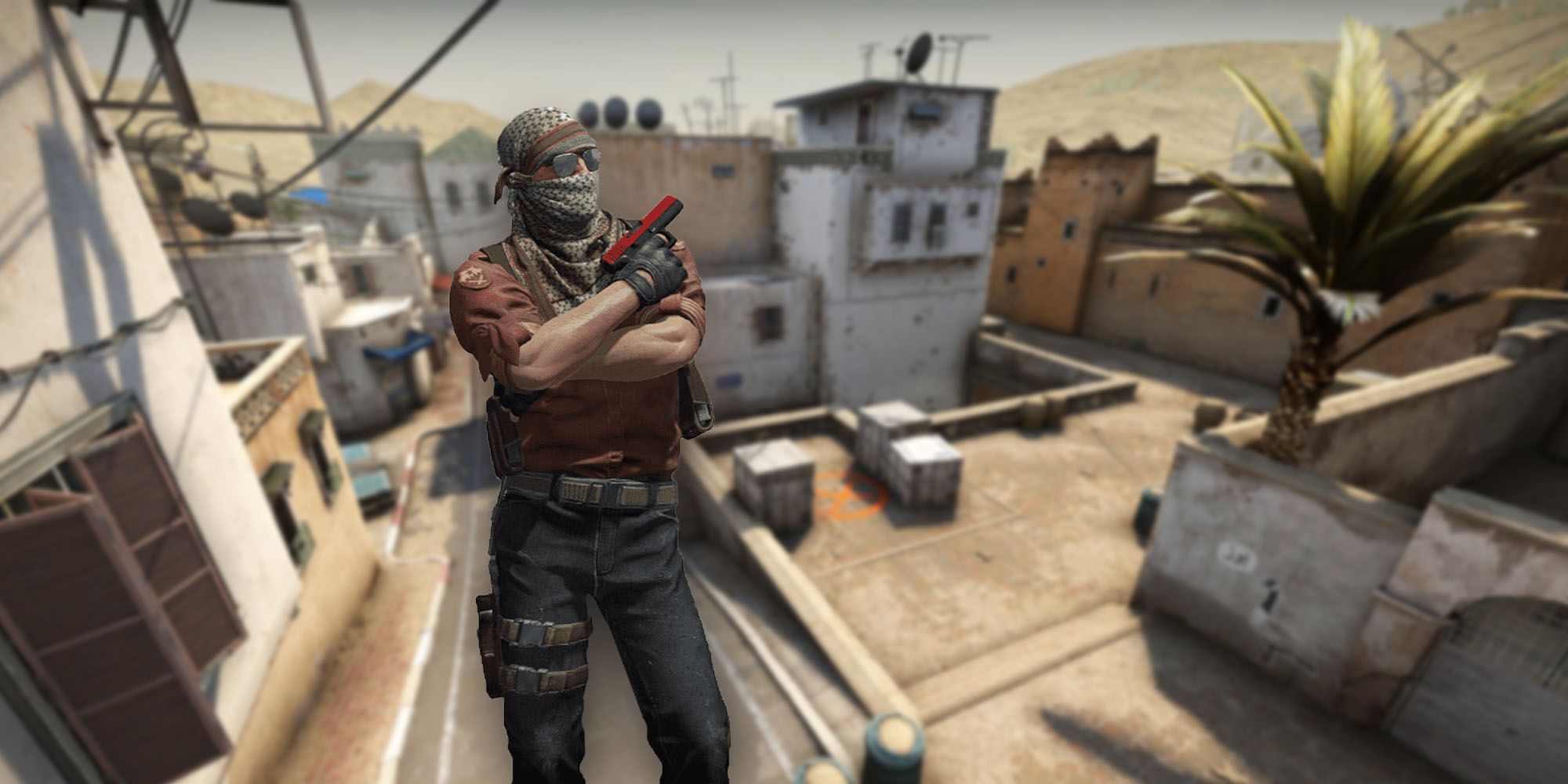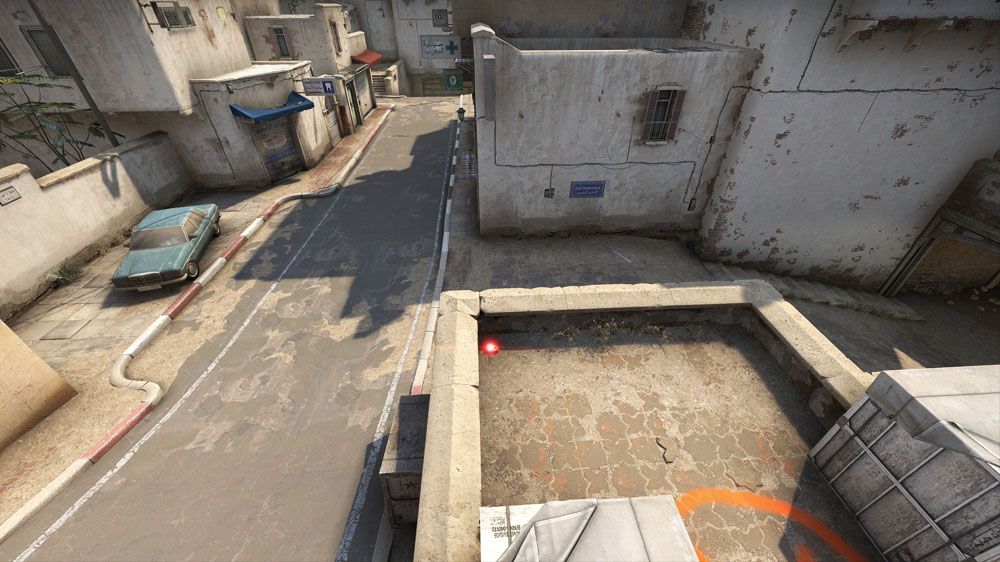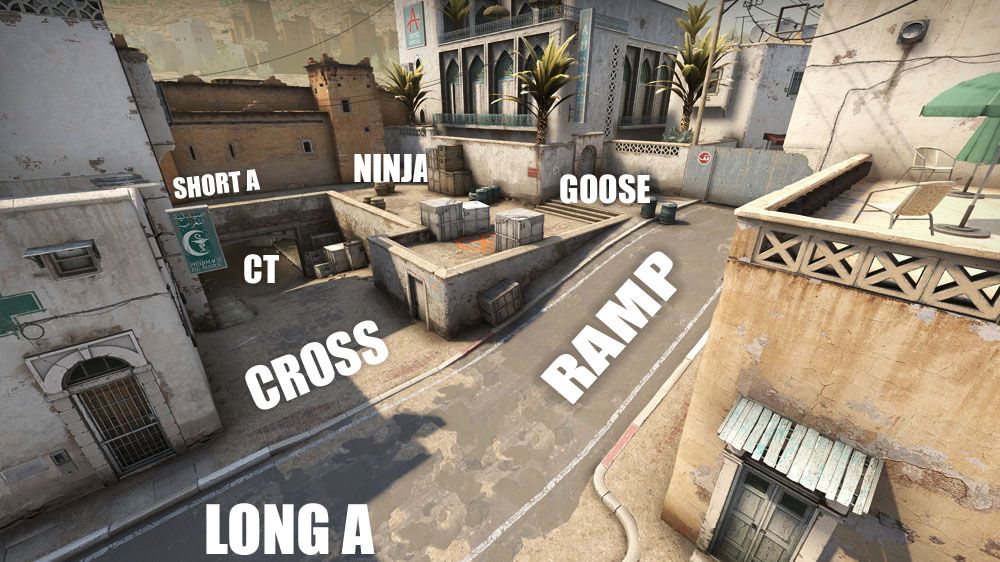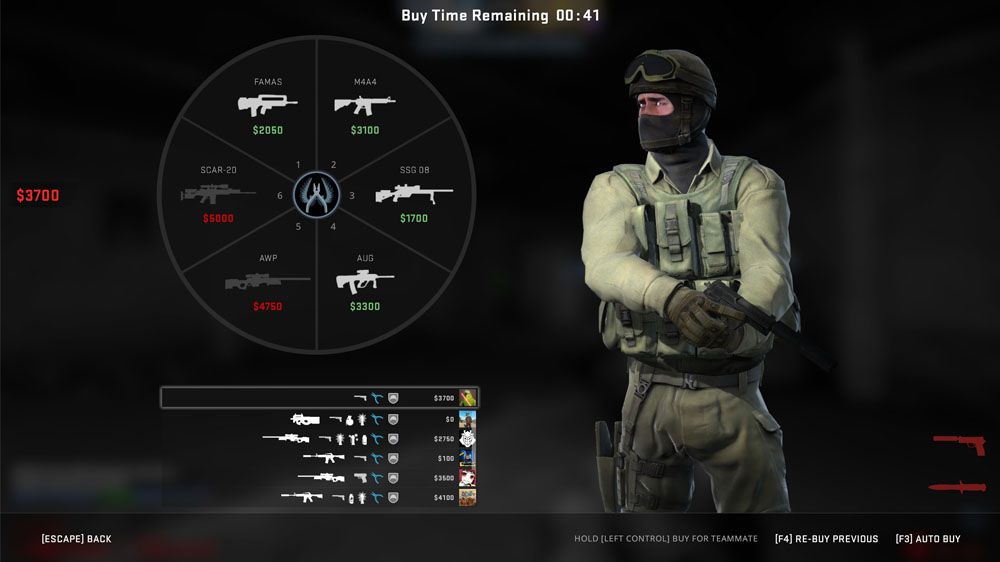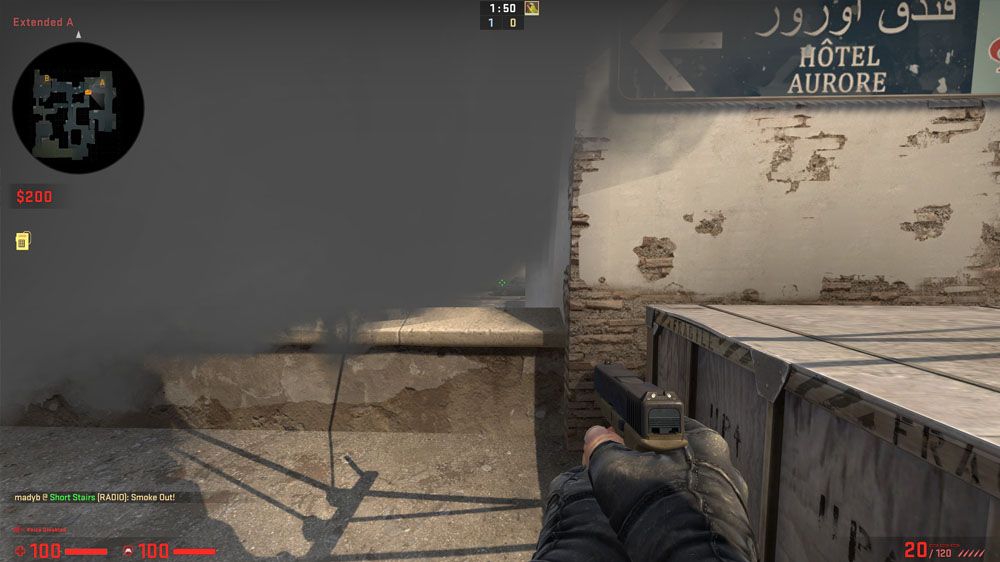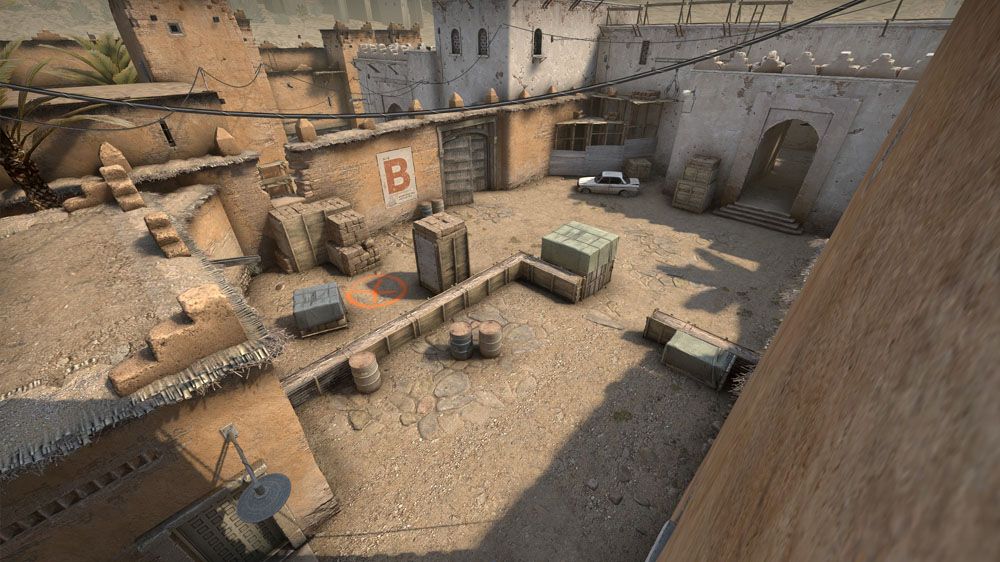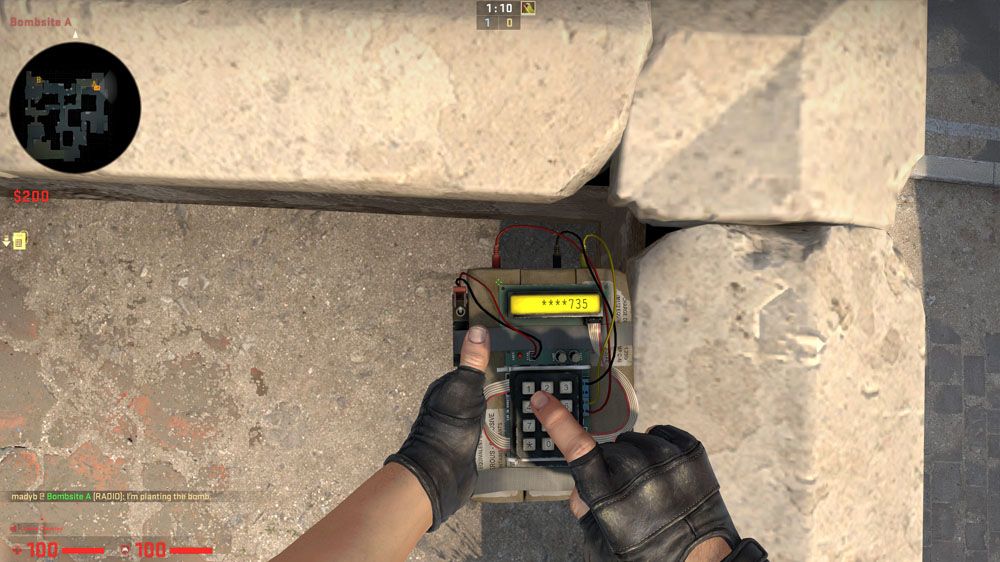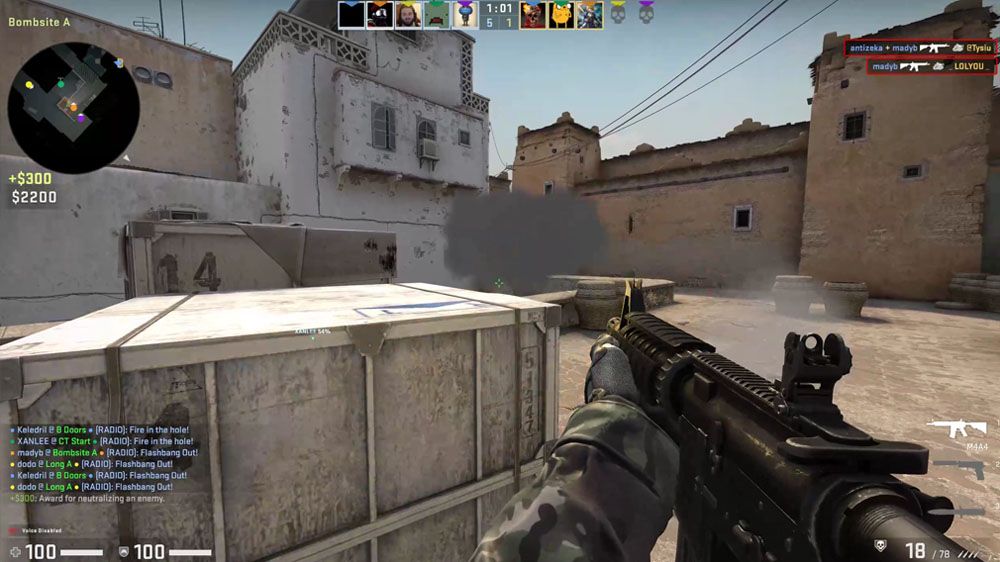No matter what your favorite CS:GO map may be, surely, you know of Dust2 and played it at one point or another. It’s a classic after all and arguably the most popular bomb defusal map of the game.
While the map’s been here since the dawn of time, it has seen countless revisions and since it’s the go-to map for a lot of competitive players, mastering Dust2 is essential if you want to improve your chances of ranking higher on CS:GO.
This guide is mainly focused on Valve’s matchmaking, but most tips and tricks will apply to other third-party platforms such as FACEIT.
The Most Basic Tips on Dust2
Dust2, Dust II, or de_dust2 is a bomb defusal map with two bomb spots: A and B. The iconic map’ had a major rework back in October 2018, and it has seen some minor tweaks since then. Everyone who ever played CS:GO knows Dust2 well, but not many spend enough to time master it.
It’s important to go over the basics before jumping to game-changer tips and tricks. CS:GO is a team game, no matter what you do or how hard you try, you can’t carry your team throughout a whole match. You can outperform your teammates, but working with them will increase your chances of winning.
Learn The Callouts and How To Communicate
Map knowledge is crucial and so is keeping calm and communicating with your team. Information coming from you must be accurate, specific, and fast. Therefore, you need to know all the callouts by heart.
Vague information such as left, right, behind that wall, on top of that box, etc., will do more harm than good.
Try to be as friendly as possible, even if your teammates aren’t working with you. Sometimes the matchmaking will bless you with great people, but usually, it’s the other way around.
Make sure your calls are correct. This can’t be stressed enough. Don’t immediately call “All A” or “All B”, if you see the majority of the enemy team in a specific position, but not all. If they’re not all there then they’re not all there. Your teammates may be killed by a “Lurker” player while rotating, acting on the wrong info they’ve got from you.
Another great skill is knowing when to talk. Listening to your opponent's sound cues is extremely important and a key part of CS:GO. It’s not just footsteps or reload sounds either. There are a lot of sound cues you’ll need to train your ears for from jump sounds to landing sounds, steps on different surfaces, nade pulls, and so on.
Check Your Teams Economy
Unlike most other shooters, CS:GO won’t allow you to pick high-tier weapons freely. There’s a game economy you always have to keep in mind, and it’s called “team economy” for a reason. This guide won’t explain how the CS:GO economy works, but if you want to reach higher ranks you must know the ins and outs of the game’s economic system.
Calls related to the economy are pretty much the same, regardless of which side you’re fighting for. There’s usually a team leader making the calls so keep an ear out for that person and follow your team in the buying phase of each round.
Advanced Tips on Dust2
Dust2 is a well-balanced map and the action can find you almost as soon as the round starts if both sides invest in mid-control. There aren’t tricky routes your opponents can use for rotating, so it’s somewhat a straightforward arena.
Tips For The CT Side
Counter-Terrorists on Dust2 usually invest their main resources to defend the A bomb-site, since it’s open to attack from several directions and Terrorists can use their utility from several safe positions. It’s quite hard for the T side to win the B bombsite without making sacrifices since the only way that leads to the area is a mid-long hallway, which is a death sentence in most cases.
Learn how to defend with utility — CTs usually use their utilities to counter enemy tactics. Learning counter-smokes, one-way smokes, counter-flashes are all crucial. On top of that, there are multiple molotov cocktails and nade throws you should practice halting a T rush. You should hold on to some utility in case you need to retake a bombsite.
Learn tricky bomb planting spots — This works for both CTs and Ts. T side can take advantage of planting for a specific position and defend that angle, and CTs can tell where the enemy might have positioned just by looking at the bomb’s placement.
Learn to play A Ramp — Getting kills is important, but it’s not always worth getting killed in return, especially if you don’t have a support player with you. Many A site players hold “A Short” from the stairs, or they dive deep as far as the catwalk. The A site heavily favors players fighting from the ramp. You will have multiple angles for peaking without exposing yourself, you can safely use utilities, and you only have to worry about one angle, that is short.
When you’re playing from the ramp, you’ll be fully exposed to “A Long”, so make sure to communicate with your teammates and have them covering your six.
Learn when and how to rotate — If you end up having to rotate for whatever reason, you should keep in mind that you’ll be open to ambushes. Ending up having to rotate fast is the worst, therefore you should switch positions according to what’s happening around the map and ready yourself for a half or full rotation.
Tips For The T Side
Terrorists are the ones who need to play aggressive in most scenarios since the time isn’t on their side, of course, unless they get to plant the bomb. The T side needs to attack heavily defended positions, but they usually have the number advantage since CTs need to stretch across the map and can’t leave a bombsite undefended.
Learn how to engage with utility — The T side needs to come up with opening strategies that involve making smoke walls, nading, or molotoving corners where a CT may be hiding. Raining pop-flashes also help secure a position, but that usually leaves you almost no utility to defend with.
Learn where to plant the bomb — There is no one ideal spot to plant the C4, but many. Watch how your teammates are positioned and quickly find out which position works the best to defend. If your team has an AWP player holding “A Long” from the pit, it wouldn’t make sense to plant the C4 behind a box or for “A Short”.
Learn boosting positions for defending bombsites — CTs can also benefit from boosting and catching their opponents off-guard, but considering how they need to spread, having two players holding the same angle rarely pays off. However, Ts almost always play together and can benefit from boost-peaking without having to sacrifice map control.
Learn how to play for the time — If the T side can get the bomb planted, all they have to do is defend the C4 till it blows up. As simple as it may sound, most players get trigger-happy and chase the enemy down or can’t stop themselves from picking a fight. Your goal is to defend the bomb, not to increase your kill count.
Tips For Both Sides
Knowing how to use the environment can win you a round when it seems like all is lost. You can even the odds and clutch a 1v2 or 1v3 by picking fights one at a time. Dust2 has lots of boxes, doors and mini walls to help you with that.
Attacking or defending a position with all five members of your team is almost always a bad idea. Map control and information are important and heavily investing in a tiny portion of the map will only benefit the enemy team.
Don’t be toxic and don’t pick fights with your teammates. It will only make things worse for you. Toxic behavior won’t magically turn your comrades-in-arms into god-like players nor will it help your team communicate better.

